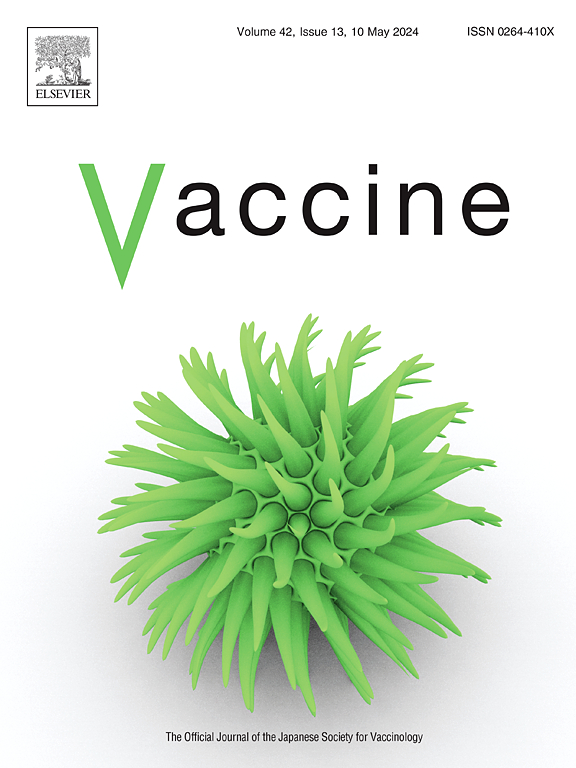肯尼亚和马拉维关于HPV疫苗接种状况的亲子协议
IF 4.5
3区 医学
Q2 IMMUNOLOGY
引用次数: 0
摘要
随着越来越多的国家引入HPV疫苗,了解疫苗接种措施的有效性非常重要。在低收入和中等收入国家尤其如此,这些国家对疫苗接种数据的公共卫生监测可能存在延迟或差距,因此往往需要其他测量方法。父母报告是衡量儿童常规疫苗接种的常用方法,但尚未对中低收入国家的HPV疫苗接种进行评估。方法我们在肯尼亚(n = 146)和马拉维(n = 98)对符合HPV疫苗接种年龄的父母/监护人及其女儿进行了家庭调查。我们比较了父母/监护人对HPV疫苗接种状况的报告与女儿的报告;后者被认为是“黄金标准”措施。结果88%的肯尼亚父母/监护人和82%的马拉维父母/监护人同意其女儿报告的HPV疫苗接种情况。父母/监护人少报(即说他们的女儿没有接种疫苗,但女孩说她接种了疫苗)比相反的情况更常见。报告接种疫苗卡数据的父母/监护人比使用召回数据的父母/监护人对女儿的同意程度更高,对自己的知识表示更有信心的父母/监护人对自己的知识表示更有信心的父母/监护人对女儿的同意程度更高。我们没有发现父母/监护人特征在报告准确性上的差异,尽管在肯尼亚,父母年龄、家庭收入和家庭中女孩数量与报告准确性存在统计学上显著的负相关(后者在马拉维也与报告准确性显著负相关)。结论:在通常使用调查来衡量HPV疫苗接种状况的国家,我们发现父母/监护人对其女儿接种疫苗的报告的一致性非常高。这些结果与关于常规儿童疫苗接种测量的文献结果相似。这表明,研究人员、临床医生和从业人员可以使用父母/监护人报告的其女儿的HPV疫苗接种情况作为其自己报告的免疫状况的相对较好的代表,特别是在没有普遍使用疫苗接种卡或登记的环境中。本文章由计算机程序翻译,如有差异,请以英文原文为准。
Parent-daughter agreement about HPV vaccination status in Kenya and Malawi
Background
As more countries introduce the HPV vaccine, it is important to understand the validity of vaccination measures. This is especially true in low- and middle-income countries (LMICs) where public health monitoring of vaccination data may have delays or gaps, so alternative measurement approaches are often necessary. Parental report is a common approach for measuring routine childhood vaccination, but it has not been evaluated for HPV vaccination in LMICs.
Methods
We conducted household surveys in Kenya (n = 146) and Malawi (n = 98) with parents/guardians and their daughters who were age-eligible for HPV vaccination. We compared parents'/guardians' reports of HPV vaccination status to daughters' reports; the latter was assumed to be the “gold standard” measure.
Results
88 % of Kenyan parents/guardians and 82 % of Malawian parents/guardians agreed with their daughters' reported HPV vaccination status. It was more common for parents/guardians to under-report (i.e., to say their daughter was unvaccinated but the girl said she had received dose(s)) than the inverse. Agreement with one's daughter was higher among parents/guardians who reported data from vaccination cards versus using recall, and among parents/guardians who expressed more versus less confidence in their knowledge. We did not find many differences in accuracy of report by parent/guardian characteristics, although in Kenya there were small and statistically significant negative associations with parental age, household income, and more girls in the household (the latter was also significantly negatively associated with report accuracy in Malawi).
Conclusions
In countries where surveys will commonly be used to measure HPV vaccination status, we found very high agreement of parents/guardians with their daughters' reported receipt of the vaccine. These results are similar to findings from the literature about routine childhood vaccination measurement. This suggests that researchers, clinicians, and practitioners can use parent/guardian-reported HPV vaccination of their daughter as a relatively good proxy of her own reported immunization status especially in settings without universal use of vaccination cards or registries.
求助全文
通过发布文献求助,成功后即可免费获取论文全文。
去求助
来源期刊

Vaccine
医学-免疫学
CiteScore
8.70
自引率
5.50%
发文量
992
审稿时长
131 days
期刊介绍:
Vaccine is unique in publishing the highest quality science across all disciplines relevant to the field of vaccinology - all original article submissions across basic and clinical research, vaccine manufacturing, history, public policy, behavioral science and ethics, social sciences, safety, and many other related areas are welcomed. The submission categories as given in the Guide for Authors indicate where we receive the most papers. Papers outside these major areas are also welcome and authors are encouraged to contact us with specific questions.
 求助内容:
求助内容: 应助结果提醒方式:
应助结果提醒方式:


